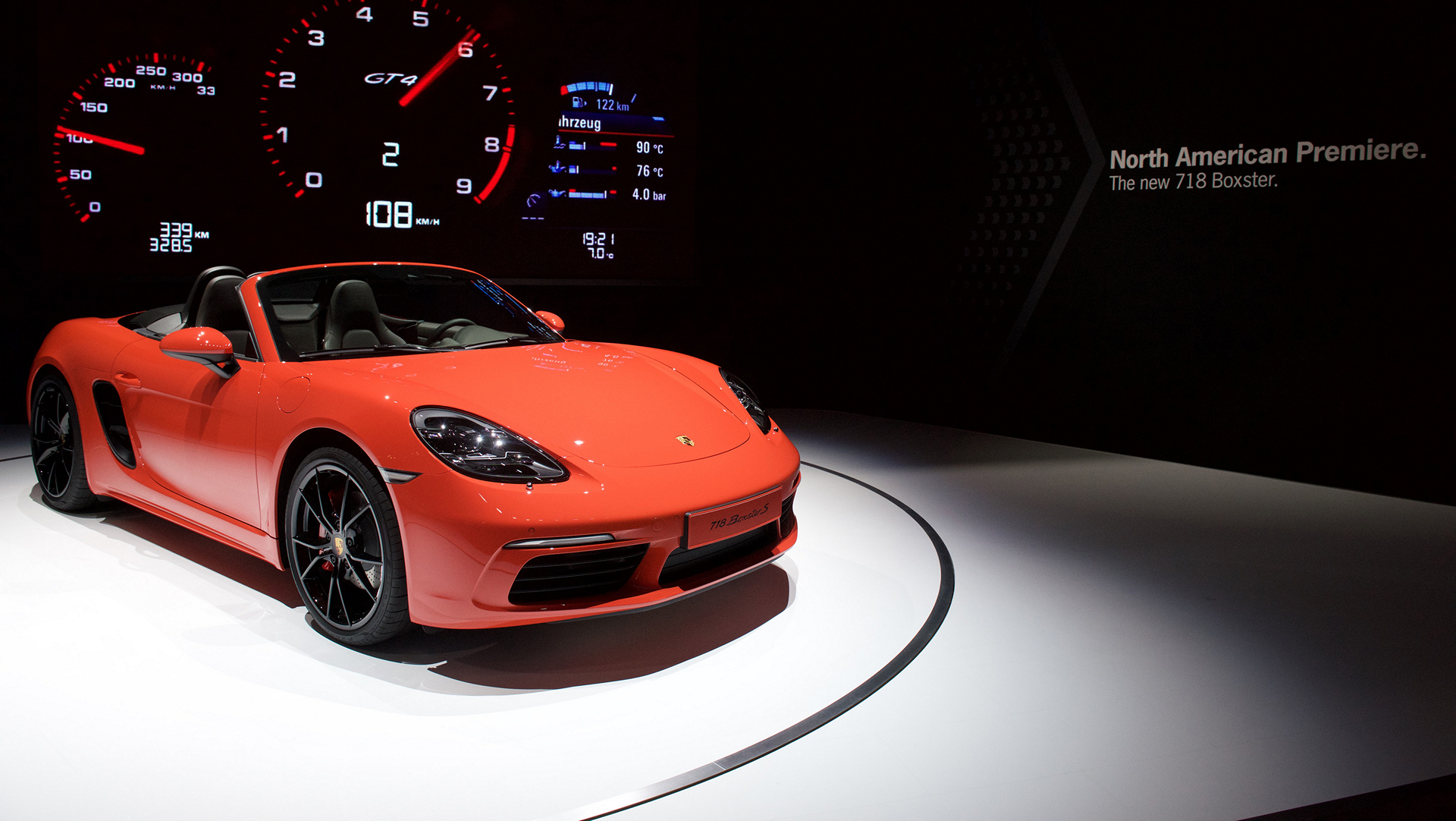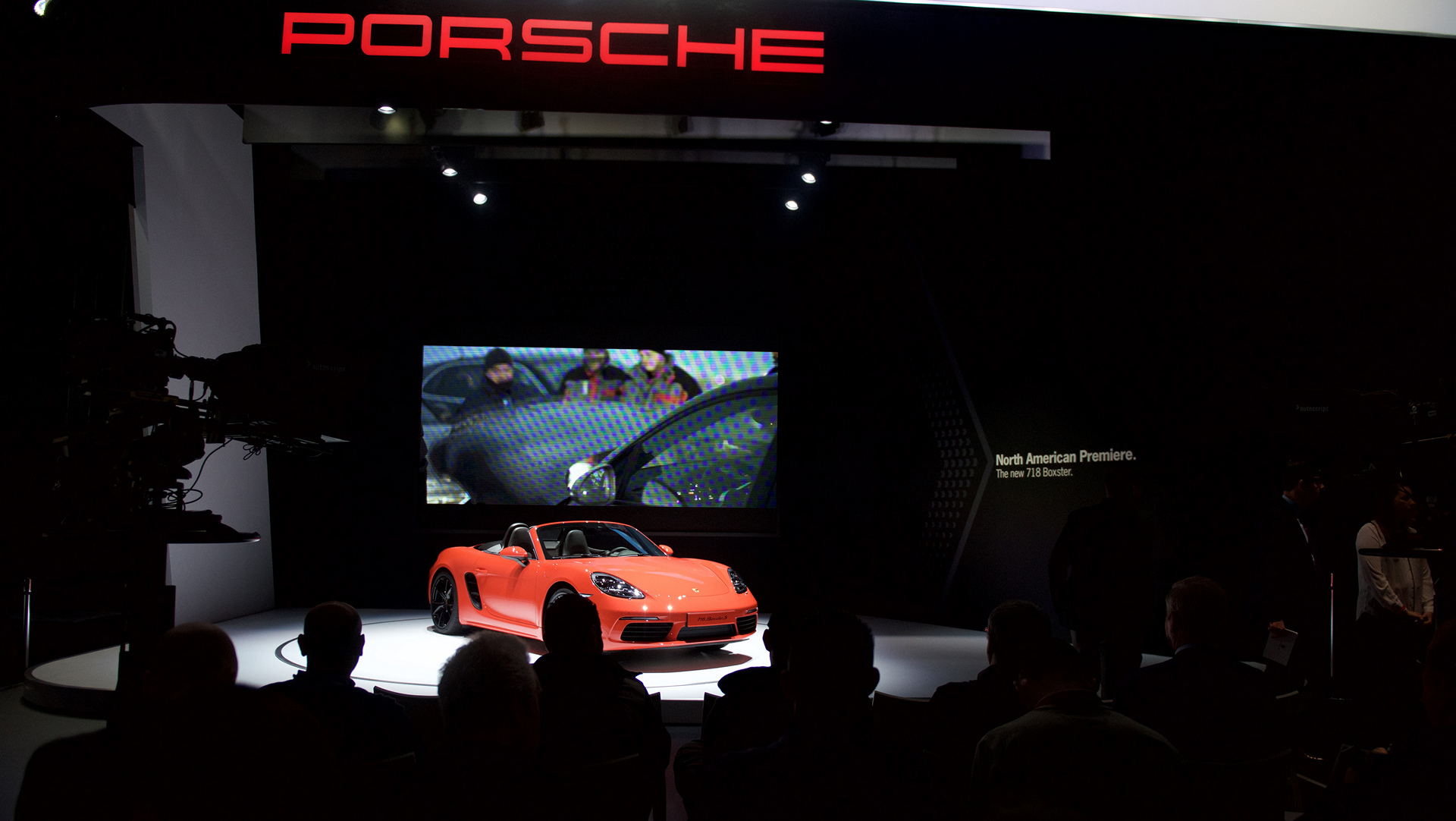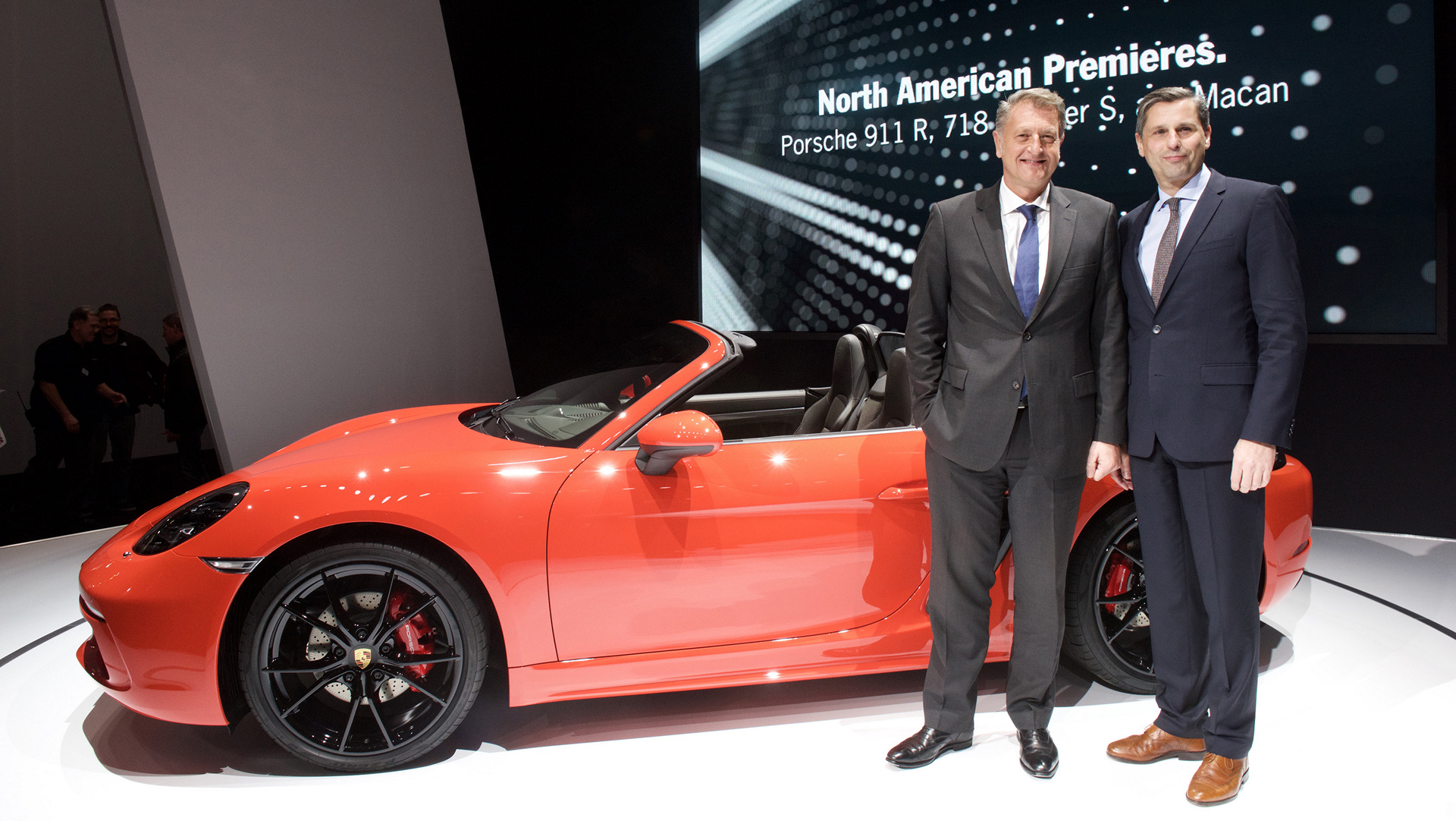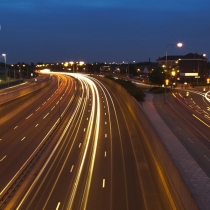The Porsche 911 R
R stands for Racing at Porsche. The appearance of the 911 R is therefore consistently sporty: the 368 kW (500 hp; 13.3 l/100 km; CO2 emissions: 308 g/km) engine output is combined with a weight of only 1,370 kilograms. This makes the 911 R the lightest model in the current 911 range. Responsible for this is the advanced lightweight design with numerous carbon parts, magnesium roof and weight savings in the equipment.
Combined with the exclusive use of six-speed manual transmission, the engine from motorsport delivers thrust in every conceivable situation. In only 3.8 seconds, the 911 R breaks through the 100 km/h barrier, achieving a top speed of 323 km/h. In terms of driving dynamics, the 911 R with rear-axle steering, rear differential lock and PCCB ceramic brakes offers the best 911 equipment available.
From the exterior, the 911 R gives a somewhat reserved impression. Characteristic details such as the rear body and nose familiar from the 911 GT3 as well as a special colour styling distinguish the high-performance sports car from a 911 Carrera. The product run of the 911 R is limited: only 991 models will be coming onto the road.
The Porsche 718 Boxster
In its 718 Boxster, Porsche is deliberately revisiting the concept of the legendary 718 mid-engine sports car. With its lightweight construction, strong four-cylinder flat engine and precise chassis, it won numerous international races in the 1950s and 1960s. Today the four-cylinder power unit is water-cooled and turbocharged. From its two litres of displacement, the new machine in the 718 Boxster delivers 220 kW (300 hp; 7.4 – 6.9 l/100 km; CO2 emissions: 168 – 158 g/km). The 718 Boxster S with a 2.5 litre four-cylinder engine takes this figure up to 257 kW (350 hp; 8.1 – 7.3 l/100 km; CO2 emissions: 184 – 167 g/km) thanks to its turbocharger with variable turbine geometry. Compared with previous Boxster models, this corresponds to an increase of 26 kW (35 hp) in each case.
Redesigned from scratch, the engines also impress with their efficiency: depending on the model and equipment, the consumption figures are up to 13 per cent lower than the respective predecessor models. The completely retuned chassis, more powerful brakes and not least the emotive tone are designed to convert the especially compelling power development into even more driving fun.
The new model line has also undergone comprehensive further development in its design. Only luggage compartment lid, windscreen and convertible hood have been left unchanged.
The new Macan
Porsche is expanding its line-up of compact SUVs with a new variant of the Macan. Following the introduction of the Macan S, Macan Turbo, and most recently the Macan GTS models, the four-cylinder turbocharged engine in this model is tailored for use in the sports car of the SUV segment. As is characteristic for all Porsche models, the Macan is capable of converting its engine power into impressive driving dynamics using the standard active all-wheel drive with Porsche Traction Management PTM, as well as the agile suspension and precise steering. Air suspension with load-leveling control and the PASM system with adaptive dampers are optionally available. Weighing only 3,902 pounds, the Macan is the lightest SUV made by Porsche, which translates into particularly agile handling.
The turbocharged two-liter engine in the Macan delivers 185 kW (252 hp; 7.4–7.2 l/100 km; CO2 emissions: 172–167 g/km) from 5.000 to 6.800 rpm and comes standard with a seven-speed PDK dual-clutch transmission like all Macans. As a result, the Macan delivers impressive acceleration: It is capable of reaching 100 km/h in 6.7 seconds, and with the optional Sport Chrono-Package, the time is reduced to 6.5 seconds. The top speed is 229 km/h. In terms of fuel consumption, the Macan proves to be very efficient: Depending on the mounted wheel and tire combination, the Macan consumes 7.4 l/100 km to 7.2 l/100 km according to the NEDC.
Consumption data
- 911 R: Combined fuel consumption 13.3 l/100 km; CO2 emissions: 308 g/km
- 911 GT3: Combined fuel consumption: 12,4 l/100 km; CO2 emissions: 289 g/km
- 911 Carrera: Combined fuel consumption: 8.3-7.4 l/100 km; CO2 emissions 190-169 g/km
- 718 Boxster: Combined fuel consumption: 7.4 – 6.9 l/100 km; CO2 emissions: 168 – 158 g/km
- 718 Boxster S: Combined fuel consumption 8.1 – 7.3 l/100 km; CO2 emissions: 184 – 167 g/km
- Macan: Combined fuel consumption: 7.4–7.2 l/100 km; CO2 emissions: 172–167 g/km
- Macan S: Combined fuel consumption: 9,0 – 8,7 l/100 km; CO2 emissions: 212 – 204 g/km
- Macan Turbo: Combined fuel consumption: 9,2 – 8,9 l/100 km; CO2 emissions: 216 – 208g/km
- Macan GTS: Combined fuel consumption 9.2-8.8 l/100 km; CO2 emissions 215-207 g/km












































